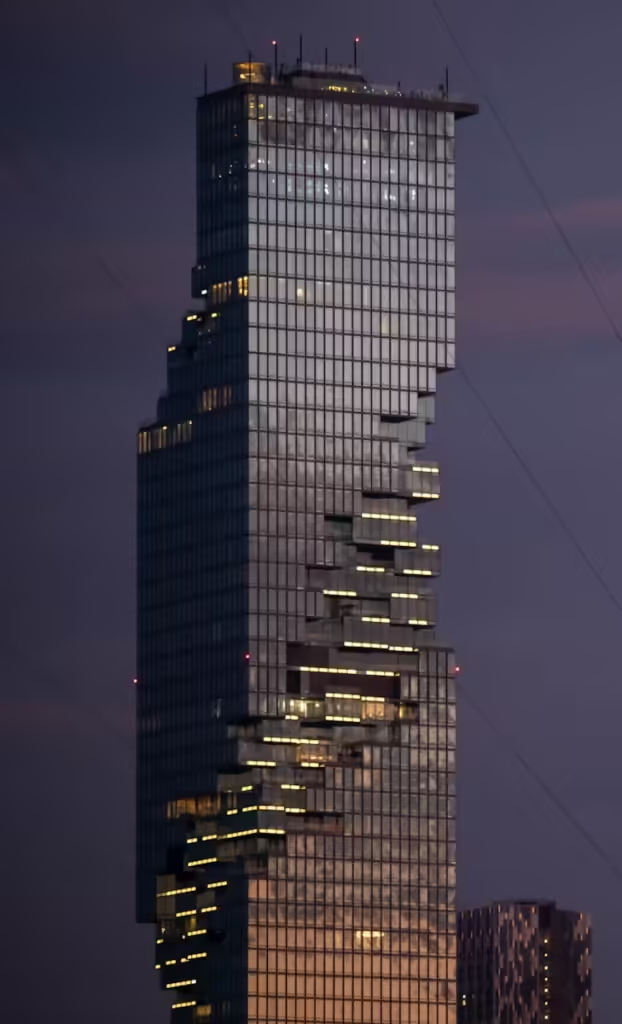The global construction sector significantly contributes to carbon emissions, encompassing both the construction phase and the building’s operational life. Greenhouse gas emissions from the urban construction sector alone account for almost half of the total emissions. Addressing this issue and striving for sustainable construction practices is crucial to mitigate environmental impact. One remarkable example of such sustainable construction is the Pixel building in Melbourne, Australia.

The Pixel Building: A Sustainable Marvel
The Pixel building, completed in July 2010, stands as a beacon of sustainable construction. Its construction and operational strategies aim to minimize carbon emissions, making it a carbon-neutral structure over its lifespan. Here, we examine the innovative approaches that enable the Pixel building to maintain a significantly reduced carbon footprint.
Carbon Emission Reduction Strategies
1. Utilization of Photovoltaics and Wind Turbines
The roof of the Pixel building is adorned with wind turbines and solar panels equipped with solar tracking systems. These installations can generate 6.3 kW of electricity from solar power and have a 5 kW installed capacity for wind energy. This feature significantly reduces dependence on external energy sources, making the building more self-sufficient and lessening its environmental impact.
2. Rainwater Harvesting
Rainwater harvesting is a common practice in sustainable construction. The Pixel building takes advantage of this by incorporating special tanks to collect and treat rainwater. The treated water is then utilized in washrooms and other areas, reducing the need for external water sources and promoting efficient water usage.
3. Adoption of Eco-Friendly Refrigerants
To address the adverse effects of traditional refrigerants on the environment, the Pixel building opts for Ammonia refrigerant, which has zero impact on the ozone layer. By avoiding the use of harmful refrigerants like CFCs and hydro-fluorocarbons, the building contributes to a greener and more sustainable environment.
4. Innovative Use of Pixelcrete
Traditional cement production generates a substantial amount of carbon emissions. To counter this, the Pixel building employs ‘Pixelcrete,’ a unique concrete mix that uses nearly 60% less cement compared to conventional mixes. This innovation significantly reduces the carbon footprint of the building while incorporating recycled aggregates.
5. Efficient Air Conditioning System
The Pixel building stands out in its air conditioning approach. Utilizing a gas-fired ammonia absorption heat pump, the building maintains a comfortable indoor environment with minimal energy consumption. This system efficiently heats or cools incoming air as required, distributing it evenly across the building without compromising the environment.
Additional Environmental Initiatives
6. Vacuum Flush Toilets for Water Conservation
To minimize water usage, the Pixel building incorporates vacuum flush toilets that use air suction to remove waste. This innovative system reduces water consumption while maintaining high sanitation standards.
7. Anaerobic Digester for Waste Management
The building features an anaerobic digester on its roof, which processes waste from vacuum flush toilets to produce biogas. This sustainable waste management approach ensures that no form of energy remains unused within the building.
8. Efficient Energy Management
The design of the Pixel building emphasizes carbon balance, ensuring it is energy-positive while being carbon-neutral. Energy-efficient components and strategies such as LED lighting, external shading systems, and individually addressable dimming systems further reduce the building’s energy demand and environmental impact.
Conclusion
The Pixel building serves as a testament to the potential of sustainable and environmentally conscious construction practices. By minimizing carbon emissions and adopting innovative solutions, this building showcases the path toward a greener and more sustainable future for the construction industry. Implementing such strategies on a broader scale can significantly contribute to combating climate change and building a more eco-friendly world.
